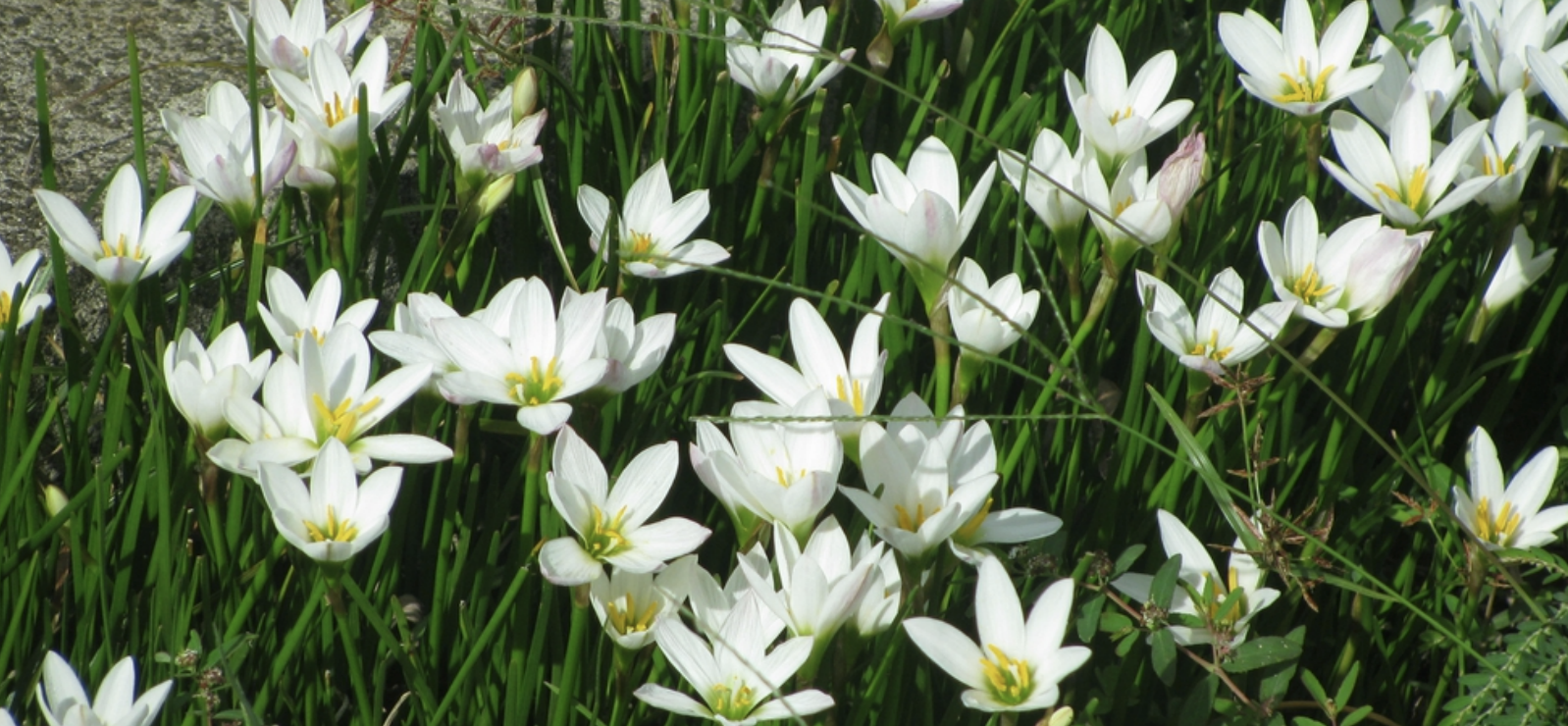|
By Matt S., Pitt County Extension Director and Horticulture Agent When we think of bulbs in the garden, our minds likely turn first to those we typically plant in fall with the promise of early spring blossoms, such as crocus, daffodil, tulip and hyacinth. While each of these is an undeniable garden stalwart and a harbinger of spring, there are a quite a number of garden bulbs that are less familiar, including many that are best planted in spring and bloom in the summer. Among these is the diminutive rain lily, Zephyranthes candida, a member of the amaryllis family that grows to a height of less than 1 foot tall. This particular species of rain lily is native to South America, though other species of Zephyranthes have native ranges which stretch further north through Mexico and the southern United States. Rain lilies, as their name suggests, tend to bloom shortly after periods of summer rain, particularly when growing in the wild. Individual flowers of Z. candida are white, with 6 petals radiating out like rays from the bloom’s center. Other species of rain lily have similar flower shapes, but come in additional colors including pink and yellow. Foliage is evergreen, long and slender. In many ways, rain lilies resemble crocus, from height, to flower shape, to foliage, though the petals of rain lily tend to be flatter and more pointed at the tip, compared to crocus blooms, which are a bit more saucer shaped. Because of their general similarities, they can be used in many of the same types of garden settings, including rock gardens, slopes, walkways, containers, patios, and even as a houseplant. In colder climates the bulbs will not over-winter outdoors and must be dug up and brought indoors for the winter. While that is not necessary here, the plants do perform well indoors as houseplants, though likely with less frequent bloom. Forms in a mass. Forest and Kim Starr, CC BY 2.0 Rain lilies are generally pest-free, news that always makes gardeners rejoice. They will occasionally be grazed on by generalist feeders such as slugs or spider mites, but these rarely cause any significant damage. Rain liIies are also tolerant of many adverse soil conditions, including very dry soils, as well as overly wet ones. Like many bulbs, the rain lily does not like to be wet in the winter time. Be sure to provide adequate drainage, particularly if grown in outdoor containers that can often get soggy during winter months.
Rain lily will be one of many plants offered at the annual Master Gardener Plant Sale at the Pitt County Arboretum next Saturday, May 18 from 10 am-12 noon. We hope to see you there! Matthew Stevens is the County Extension Director and Horticulture Agent for North Carolina Cooperative Extension’s Pitt County Center. If you have questions about this article or gardening in general, please contact the Pitt County Extension Master Gardener Infoline at 252-902-1705.
0 Comments
Leave a Reply. |
Matt Stevens
Pitt County Extension Director & Horticulture Agent Archives
July 2024
Categories |



 RSS Feed
RSS Feed